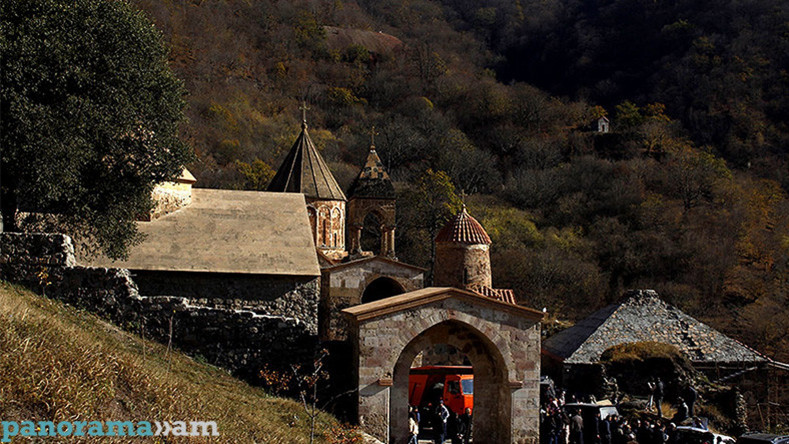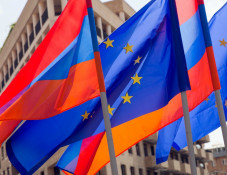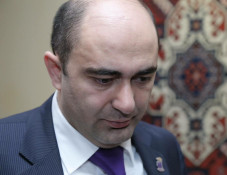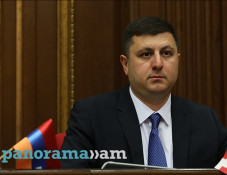
Azerbaijan transfers Artsakh's Dadivank monastery to Udi community administration
The medieval Armenian monastery of Dadivank located in the Karvachar district of Azerbaijani-occupied Artsakh (Nagorno-Karabakh), has been handed over to the administration of the Udi community.
According to Azerbaijani media reports, "During its occupation from 1993 to 2020, Armenians attempted to falsify the history of the temple, falsely claiming it to be theirs. But after the liberation, it was returned to the original owners."
The Artsakh Monument Watch reports that after the signing of a trilateral agreement on November 9, 2020, and the end of hostilities in Artsakh, Azerbaijan launched an anti-Armenia campaign in the case of the occupied territories. This kind of deliberate propaganda, first of all, endangers many monuments of the Armenian Christian spiritual culture located in the occupied territories.
The Azerbaijani mechanism of propaganda, continuing the policy of appropriation of the Armenian cultural heritage of Artsakh, formed back in the Soviet years, presents it as cultural monuments of the Albanians and links them with Caucasian Albania. After the end of the war in 2020, the Azerbaijani campaign, along with the propaganda of the appropriation of the Armenian cultural heritage, began to actively involve the Udi Christians living in Azerbaijan, the followers of the Armenian Gregorian Church. The main reason was that the Udis are the only Christians among the peoples of Caucasian Albania.
Dadivank appears in bibliographic sources for the first time in the 9th century, "...in Khoradzor, known as Dado monastery" (Kaghankatvatsi 1983, 340). It is also known as Dadi, Dadoi, Dadui, Dadei, Tadei, Khuta, and Arakelots in later lithographic and bibliographic sources (Ayvazyan 2015, 6). The monastery's foundation is traditionally linked to the martyrdom of Dadi, a disciple of the apostle Thaddeus. According to legend, he was martyred for spreading Christianity, and a monastery was built on his grave.
There is no available information regarding the monastery's history, construction process, or activities before the 12th century, but it was already a major spiritual and cultural center in the second half of the 12th century. It is mentioned indirectly in the historian's report, which also describes the years 1145-1146, the actions of the Chol commander who came from Persia to punish the Shahap (city head) of Gandzak's rebellion against the Seljuk state: "(Chol) burned down the apostolic holy place known as Dadivank" (Kaghankatvatsi 1983, 353). It is crucial to note that the lords of Khachen also fought against the weakened Seljuk state, and as a consequence, Dadivank, along with many other monasteries and fortresses, was repeatedly damaged and destroyed. That being said, thanks to that struggle, the lords of Khachen gained some political independence in the second half of the 12th century. Dadivank was under the reign of Haterk lords, who were considered supreme rulers and served as their spiritual center at the time. Beginning in the second half of the 12th century, as evidenced by inscriptions carved on the monastery's walls, the religious and secular buildings in the monastery were renovated and new ones were constructed, resulting in the current appearance of the monastery complex.
Newsfeed
Videos






























